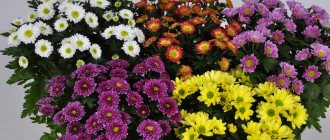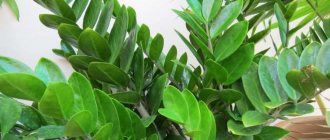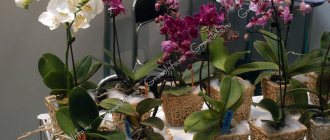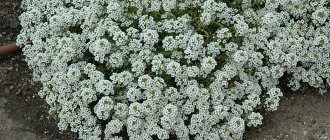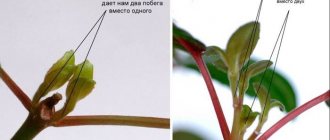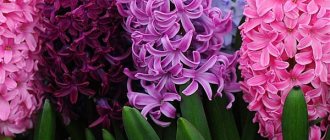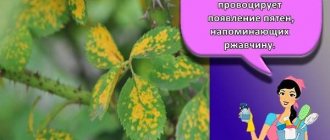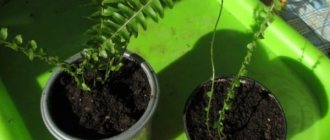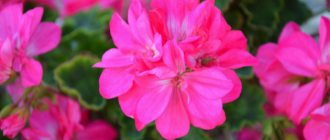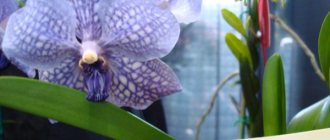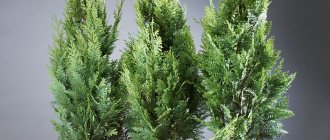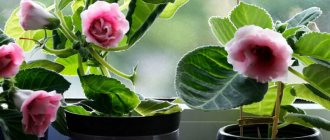About 40 types of lavender are known to the world, but mainly French and angustifolia are successfully grown. The first of those listed adapts especially well to indoor conditions. Of course, when growing this plant, certain difficulties may arise due to a lack of light or fresh air. All these nuances and whether it is possible to grow lavender at home in a pot will be discussed further.
Lavender: plant varieties and its origin
Lavender does not have a central stem. This plant belongs to the Lamiaceae family. Inflorescences appear on its shoots in the form of ears of white, pink or purple color, depending on the variety. It has a pronounced period of dormancy and growing season.
Lavender in a pot
This plant has 47 species and several hybrid forms, differing in bush height, bud shade and resistance. Some species are considered suitable exclusively for open ground. Others take root quite well at home.
Varieties for growing in pots
The most common varieties for indoor growing include:
- Lavender angustifolia (English). This perennial evergreen subshrub is considered the most unpretentious and frost-resistant species cultivated in Russia. The height of this plant reaches a maximum of 30 cm. The inflorescences are on long stems, which are covered with narrow, elongated leaves of a gray-green hue. The flowers are blue with shades of lilac and violet. The flowering period is July-August.
- Lavender latifolia (French). This species is characterized by the presence of wide leaves and heat-loving behavior, and is the ancestor of decorative varieties. Caring for him is necessary in exactly the same way as for other relatives. This lavender has beautiful flowers in various shades. The plant does not have a pronounced odor, which the English variety has. This species blooms from April or May to July. But at the end of summer, flowering may occur again. The height does not exceed 60 cm. The most beautiful representative of the species is lavender with butterfly-shaped flowers.
- Lavender serrated. The plant received this name because of its rugged, silver-colored leaves. Large fragrant flowers appear in the middle of the summer season. This plant is a heat-loving species. Designed for indoor growing.
On a note! Which variety to choose for yourself is up to everyone to decide for themselves. They are about the same in terms of care.
Origin of the plant
Lavender has been known since ancient times. It is native to the Mediterranean, Canary Islands and India. In the distant past, dried lavender flowers were used for water treatments. The ancient Romans added it to the bath water to wash their hands before eating, and used it to wash things. Because of this, the name of the plant is translated from Latin as “to wash.”
Lavender was used as a medicine to protect against infectious diseases. When there were epidemics, the Romans made lavender fires in front of their houses. Over time, lavender became known throughout the world. Essential oils were made from it, lavender became a symbol of love and beauty, it was grown in gardens and used for cooking.
Lavender field
Advantages and disadvantages
When deciding to grow lavender, it is worth familiarizing yourself with the main advantages of the culture. The plant has a pleasant aroma that has a calming effect and eliminates headaches. Lavender has many beneficial effects. Essential oil is made from the flowers. It is used in medical practice, cosmetology, and the perfume industry.
The oil is often used to combat burns. It helps cope with joint pain. The composition is also used for massage. It helps relax muscles and eliminate tension. The composition has a strong antimicrobial effect. The plant has practically no disadvantages. The only drawback can be considered individual intolerance to the aroma of the culture.
Lavender in a pot: care at home
Lavender - planting and care in open ground
Not everyone grows lavender in a pot in their apartment. Grooming is very important to her. Providing all necessary conditions will lead to a positive result:
Temperature
Lavender is sensitive to extreme temperature changes. For each variety, you need to clarify the minimum and maximum temperature values. Lavender generally does not do well at temperatures below 5°C. The shrub prefers to bloom at a temperature of 18-20 °C. Overheating of the root system is dangerous for the plant. It will lead to rapid drying and death of the flower.
Lighting
Lavender requires good lighting. Any shadow will lead to discomfort. It is recommended to place lavender only on window sills on the east or south side. During the plant's dormant period and on cloudy days, lighting should be provided. The minimum daylight hours for lavender is 10 hours. In winter, you can illuminate the flower with a fluorescent lamp.
Watering
The plant does not require strong and abundant watering. It is recommended to water 1-2 times a week in summer at moderate temperatures. In winter, the plant should be watered no more than once every 2 weeks. Watering is reduced only during the dormant period. The water temperature should be similar to room temperature. Watering should be done early in the morning or in the evening.
Spraying
The plant requires regular spraying. It is especially necessary in winter if the flower is located close to the battery.
Humidity
Overwatering poses a greater threat to this plant than lack of moisture. However, severe drought in the soil will negatively affect the flower. If lavender suffers from central heating or dry air, it is recommended to place humidifiers near it.
Priming
For planting, you should use a universal soil designed specifically for house flowers. If desired, you can make a special soil. To do this, you need to mix sand or fine gravel, as well as turf, humus, and leaf soil.
Feeding
Lavender does not require soil containing many nutrients. Provided it is replanted every year, it can go quite a long time without feeding. However, for active and spectacular flowering, it is recommended to feed the plant every 2 weeks from spring to autumn.
Watering lavender
Important! Conventional mineral fertilizers intended for indoor plants are suitable as fertilizing. In early spring it is worth using nitrogen fertilizers. During the period of buds and flowering, potassium-phosphorus fertilizers are suitable. Potassium should be contained in larger quantities.
Necessary conditions for cultivation
Lavender on the windowsill is a very real phenomenon. The main condition is the selection of dishes, soil and compliance with the maintenance requirements in the apartment.
[adsp-pro-6]
Lavender pot
When selecting a pot, an important condition is sufficient space to accommodate the root system. For planting, you can use a pot or an oblong container. Lavender loves space, so to start growing, you need to select a pot diameter of at least 30 centimeters. A smaller diameter will negatively affect flowering: the less nutrition there is at the roots, the smaller and more inconspicuous the flowers. The container for lavender is selected with a volume of at least 2-3 liters. Several bushes planted in an oblong container look impressive.
Lavender needs to be planted in a large pot.
The growing container must have a sufficient number of drainage holes to drain excess water when watering. The material of the pot does not matter. But experienced gardeners advise using an unglazed ceramic pot, since in a plastic one the roots may suffer from waterlogging. A drainage layer at the bottom of the pot at least 5-6 centimeters high will help protect the plant from waterlogging.
The container for planting lavender must be light. Dark dishes get very hot in the sun, and the earthen lump will dry out too quickly. Overheating of the roots of even such a heat-loving plant will negatively affect its well-being, and can even lead to death.
Location and lighting requirements
Lavender is extremely demanding on lighting and will not grow without enough light. The apartment requires a south window sill. In summer, it is advisable to place the plant on the balcony, or better yet, take it outside.
[adsp-pro-4]
Lavender in a pot in winter, even on a southern windowsill, will suffer from a lack of sunlight, so it needs to be additionally illuminated. To organize additional lighting, you can use special phyto- or fluorescent lamps. Daylight hours for the plant should be at least 10 hours.
Lavender needs additional lighting
Selecting soil for lavender in a pot
The ideal soil composition for lavender consists of sand or gravel, humus, turf or leaf soil in a ratio of 1:1:2. If it is impossible to prepare the substrate yourself, ready-made flower soil from the store is quite suitable. You need to add a small amount of small crushed stone to it for looseness and breathability.
Plain garden soil cannot be used for planting lavender, as it becomes compacted when watered, and the roots of the plant begin to “suffocate.”
Features of winter care, dormant period of indoor lavender
The main question that arises for those who have indoor lavender: how to care for it during the dormant period? When the bush fades, it must be pruned and rid of dry leaves.
Lily in a pot - care at home
During the winter, the bush falls asleep. At this time, it is recommended to move it to a cool place away from hot radiators and heaters. It is necessary to maintain the room temperature at 17-19 °C.
Important! The plant should be watered as little as possible in winter. This will ensure the lavender bush blooms profusely in the summer.
Trimming lavender
Comments (2)
Daria
01/29/2019 at 16:07 |
There was an unsuccessful attempt to grow lavender at home. Unfortunately, I didn’t know that the color of the container was so important - my pot was dark in color. I think this is one of the reasons why lavender didn’t take root with me.Answer
Yulia Expert Plodogorod
02/01/2019 at 16:48 |
Hello, Daria! Like any other pet, lavender takes some getting used to. First of all, you need to ensure sufficient lighting. If there is no natural light for the required time, then it is worth using phytolamps not only in winter, but also in other periods. We recommend adding sand and lime to the mixture that you put in the pot. This plant does not like drafts, especially when it is young.
For drainage, you can also use a layer of sand or broken brick. After the plant is planted and you begin to water it, make sure that excess moisture drains out well. If the outflow is too slow, add a few more holes in the bottom of the container. Any water that accumulates in the pan should be poured out immediately.
If you decide to grow from seeds, then do not worry when in the first year the plant will be thin and inconspicuous; it will begin to bloom in the second year. We recommend pruning after flowering and replanting in early spring so that the flower can adapt to the new container before flowering begins. Be sure to disinfect the pruning shears before pruning, and also disinfect the pot, even if it is new, just from the store. In both cases, a solution of potassium permanganate is suitable.
If your plant has pests and you decide to bathe it in the shower, remember that the pot must be kept at an angle so that water does not flow into it. Otherwise, even if the pests can be eliminated, a new problem will arise, namely, rotting of the roots. This is practically a death sentence for a plant that cannot tolerate stagnant moisture in a pot.
To prevent gray rot, it is necessary to carry out sampling in time, since it is the thickening of the flower that can provoke the development of this disease.
Answer
When and how does indoor lavender bloom?
Hyacinth in a pot: home care
The flowers of the bush are formed in June. The plant can continue flowering until autumn, or more precisely until October. During flowering, the plant's flowers bloom. They produce inflorescences that turn into spikelets. Each spikelet contains 6-10 buds.
The leaf shape of each species may be different. To the above types of shrubs it is worth adding:
- manstead, whose purple inflorescences rise above the stem;
- Hidkot, which has highly branching shoots and large flowers of a blue-violet hue;
- southerner, requiring stratification for growing at home;
- Stehadskaya, which has inflorescences in shades such as white, cherry, lilac, purple and green;
- butterfly with flowers of blue, lilac and dark purple shades.
Lavender blossom
The valuable properties of the plant are in good hands
The flower has long been popular in folk medicine. However, modern research has shown its true benefits.
Lavender contains:
- essential oils;
- tannins;
- ursolic acid;
- flavonoids;
- linalyl acetate.
Essential oils of the plant are used to create toilet soaps, perfumes and body creams. The leaves and buds are added to vegetable dishes and refreshing drinks. To treat bruises and minor burns, decoctions are prepared. For severe headaches, traditional healers offer alcohol tinctures with lavender flowers. The herb treats sore throat, relieves stress and nausea.
If you add 2-3 drops of lavender essential oil to cold water for dousing, your body will exude a pleasant aroma for several hours.
How does indoor lavender reproduce?
Lavender propagates in two ways: from seeds and using cuttings.
Seeds
The seed growing method is rarely used because it takes a long time. To grow a lavender seed, you need:
- Sow it in a prepared container with sandy soil.
- Water, bury and leave for 30-40 days. The temperature should be from -5 to +5 degrees.
- Afterwards, transfer the box with seeds to a well-lit, warm place for the first shoots to appear.
- Plant in open ground in May.
Important! If you pre-stratify the seed, the seed will sprout much faster.
Cuttings
The method of propagating lavender shrubs using cuttings is more effective. First you need to cut annual shoots from the plant. Then they need to be divided into 10 cm sections. The lower part should be rooted at an angle of 45 °C and treated with a root formation stimulator. After this, the cuttings should be immersed in a 1:1 mixture of sand and peat. They are covered with a film, after rooting the cuttings need to be planted in pots.
How to properly grow on a window
To achieve success in cultivating the plant, you should adhere to the basic recommendations.
Pot selection criteria
Mature plants have a strong root system that feeds flowers and leaves. To ensure its full development, you should choose the right pot. It must have a volume of at least 2 liters and a diameter of at least 30 centimeters.
It is important that the container contains a sufficient number of holes to allow moisture to escape.
Soil selection
Lavender loves alkaline soil with a lot of sand. The pH value is of no small importance. It should exceed 7. When preparing the soil yourself, you should take sand, garden soil and peat in a ratio of 2:2:1. It is not recommended to use too much peat, as it leads to severe acidification of the soil. For lavender, you can purchase ready-made soil for cacti. It has a pH value of 7.5-8 and contains vermicompost, turf soil and ceramic chips.
Landing
To plant lavender, you need to choose the right propagation method. The plant can be planted by seed. It is also permissible to use layering or cuttings. It is best to plant seeds. This method is considered the most accessible.
Replanting indoor lavender
To replant the plant, you will need a plastic pot with drainage, expanded clay, soil enriched with potassium, perlite glass to improve soil properties, and Zircon growth stimulator for watering.
Step-by-step instruction:
- Take a container and mix 5 liters of earth with 1 liter of perlite in it.
- Pour expanded clay onto the bottom of the lavender pot so that air flows from below to the plant, and the top layer of soil never remains in standing water. The layer should be 2-4 cm from the bottom.
- Pour soil with perlite into the pot and make a hole.
- Take a bush and plant it in a hole.
- Add 10 ml of growth stimulator to 5 liters of water at room temperature and pour this around the edges of the pot.
- After the water has drained, fill the holes that appear with earth.
Planting lavender and caring for it at home is not that difficult.
Lavender transplant
Reproduction methods
Today, several methods of culture propagation are known. Thanks to this, each person can choose the best option.
Seeds
Before planting in the ground, the seed material is subjected to stratification. This procedure involves cold treatment to increase germination. To do this, the seeds should be placed in moist soil and covered with film. Then it is recommended to place them on the bottom shelf of the refrigerator for a couple of months.
After the specified period, the container with the seeds should be placed in a warm and bright place until the sprouts appear.
Move the grown seedlings into cups. As they grow, they are planted in pots. Flowering can be expected after 1-2 years.
See also
Caring for arrowroot at home, planting rules and propagation tips
By cuttings
To implement this method, it is worth cutting cuttings 10 centimeters long from a one-year-old shoot. It is recommended to trim the leaves from the bottom. Then place the cuttings in light and moist soil and cover with film. This will help maintain optimal humidity parameters. Rooting occurs quite quickly.
Dividing the bush
The plant can be propagated by dividing the bush. To do this, it is recommended to take a fragment of a flower growing in the garden and plant it in a pot.
Possible problems in growing indoor lavender
A shrub may stop growing if its root hits the bottom of the pot. It is recommended to select deep pots for planting. The room in which the plant is grown must be constantly ventilated. Growth will slow down in a stuffy room. You can ventilate the plant on the balcony.
Do not overdry the soil. The plant should not dry out, otherwise nothing will help it. Excessive moisture can lead to gray rot. In this case, the stems begin to wither. If a bush is affected by gray rot, it is recommended to replant the plant.
If you follow all the rules of care and provide this fastidious plant with the proper conditions, it will respond to care with beautiful flowering and a pleasant aroma.
Choosing a pot
This southern exotic plant, loving warmth and sun, prefers space. It should be noted that this delicate flower loves large, wide containers.
Therefore, it is necessary to select a container appropriate for the normal development of the root system; this can be a container or flower pot, the material of which should preferably be ceramic or clay.
Indoor lavender in a pot - photo
The color of the container also matters: it should be light. Dark color attracts more heat (remember the law of physics) and can lead to overheating of the soil and root system.
The roots of an adult plant are quite long and require a lot of space. If the pot is flat, then the root rests against the bottom and will not grow further, the flower may die.
Important! To plant lavender seedlings, you must first take a medium-sized pot. Then, as the plant grows, the container can be changed when transplanting.
Experienced flower growers involved in growing lavender have found in their practice that with a small container volume there will not be enough space for normal growth of the root system, and accordingly the plant will not receive the necessary nutrition, as a result the flowers will turn out small and inconspicuous.
The container for lavender should have a volume of about 2 liters with a diameter of approximately 30 cm. To prevent excess irrigation water from accumulating at the bottom, the pots should have holes for drainage. Expanded clay, fine gravel or walnut shells can be used as drainage material. For group planting, take oblong containers.
When to sow lavender for seedlings: optimal timing
When is it better to sow lavender for seedlings, in what month? The optimal sowing time is in the second half of February and the first half of March . But some summer residents and gardeners plant even in December and January, but in this case the seedlings will have to be illuminated so that they do not stretch out.
You also need to take into account the weather and climatic characteristics of different regions:
- In the middle zone (Moscow region) it is better to sow at the end of February.
- In Siberia, the Urals, and the North-West (Leningrad region) - in early March.
- In the South (Krasnodar Territory (Kuban), Northern Caucasus) - you can plant at the end of January, at the beginning of February.
The cycles of the moon will also help you choose the right time to plant. According to the 2022 Lunar Calendar, it is better to sow lavender seedlings in the following periods:
- Favorable days : in January: 1, 10, 11, 15, 16, 19, 20;
- in February: 7, 8, 12, 13, 14, 15;
- in March: 10, 11, 15, 20, 21, 24, 25.
- in January: 2, 18th;
Garden lavender: planting and care in the open ground
The majestic queen of incense is propagated using seeds, grown cuttings, dividing the bush and natural layering. However, first a suitable area is selected and carefully prepared. It is the main criterion for stimulating the decorativeness of culture. Since flowers love plenty of light, an open area with maximum sunlight is suitable. It should be freely blown by the wind from all sides. In cooler climates, lavender is grown in portable containers. When the temperature drops significantly, they are removed to greenhouses or houses.
The plant develops well in the shade. However, under such conditions the number of flowering buds decreases.
The aromatic bushes do not like too wet soil. Therefore, wetlands and damp areas are definitely not suitable for flower beds. If no other options exist, you need to make high-quality drainage. In areas where groundwater flows too close, higher elevations are preferred.
The soil
As you know, a special scale is used to determine suitable soil. Fertile garden soil corresponds to 4-8 pH. For example, with a large amount of lime, the soil corresponds to the maximum value. The neutral value is 7 pH. Below 6.5 indicates increased soil acidity.
Check the pH level with a special indicator, which is sold in stores. Acidity is also checked using litmus paper. To do this, the soil is diluted with water, and then the indicator is dipped. Blue color indicates alkaline soil. There is also a simpler option.
Grows in acidic soil:
- sorrel;
- coltsfoot;
- buttercups.
On alkaline soil you can find an abundance of colza. This type of soil is best suited for planting and caring for lavender.
If the soil at the dacha is acidic, add the following:
- natural lime;
- eggshells;
- wood ash.
The plant does not like heavy clay soil with high humidity. To correct the situation, add gravel, coarse sand or granite chips.
First of all, the area for planting lavender is cleared of all kinds of debris, dry leaves, and dry grass. If there are weeds, they are cut down. Then the ground is carefully plowed with a shovel. If necessary, add humus, compost or peat. Heavy soil is diluted with sand. Level with a rake and make holes. Wood ash is added to each.
Features of the flower root system
Growing any plant in a pot at home should begin with studying its characteristics. The root system of lavender is very powerful, its size is approximately equal to the size of the above-ground part. Its peculiarity is that the roots stop growing when they encounter any obstacle. Therefore, when grown indoors, bushes are replanted annually.
Difficulty level when boarding and transferring
The procedures themselves are not complicated, if you take into account the characteristics of the plant, its requirements for the substrate and environment.
Replanting homemade lavender is required if:
- 12 months have passed since the previous transplant;
- the bush stopped growing;
- there was a need to divide the bush.
Rules for caring for lavender seedlings after sowing
To ensure that seedlings do not keep you waiting for a long time, and that the seedlings grow high quality and healthy, it is necessary to provide high-quality care. If you regularly and properly care for the seedlings, the first shoots will germinate in about 14 days, but on average all seeds germinate in 30 days.
So, here are some simple but important rules for caring for lavender seedlings:
- To grow successfully, you need to provide your plants with good lighting. Immediately after planting, transfer the container to a sunny windowsill (preferably south or southwest).
- It is recommended to additionally illuminate with special phytolamps or LED lamps.
- The optimal temperature is 19-22 degrees Celsius during the day, and 15-18 at night.
- It is very important to water the seedlings on time. Before the shoots appear, this should be done with a spray bottle, and after that you can use a syringe or a small watering can (water should not get on the plants). It is necessary that the soil is always moderately moist , but do not forget that excess moisture is dangerous for fungal diseases.
- Before the shoots appear, it is necessary to ventilate the mini-greenhouse every day, removing the glass or film for 20 minutes. You also need to wipe off condensation on the surface of the covering material. After germination, the glass or film is removed.
Diseases and pests, methods of control
Lavender Dentata is resistant to diseases and pests, like other varieties of this plant.
Illiterate care can lead to the appearance of diseases. Due to excess moisture, lavender is affected by gray rot. This is a fungus that can be noticed by the appearance of gray-brown spots and a fluffy gray coating on the stems of the plant. A fungal disease can lead to the death of the plant. When the first signs of gray rot appear, the damaged areas are cut out and burned . Lavender bushes are treated with a 1% solution of Bordeaux mixture or fungicide. And you should definitely reduce the amount of watering the plant.
The most common pests of scalloped lavender are pennies, rainbow beetles and leafhoppers.
The pennitsa hides laid eggs on the stems under the foam . The foam is washed off with a stream of water. The rainbow beetle feeds on the leaves of the plant, so it must be removed by hand. Bushes are treated with insecticides against leafhoppers.
The many-faced beauty lavender is at your service
Today there are over 30 varieties of lavender. In gardening, only a few names are used. Let's get acquainted with the most popular varieties.
Narrow-leaved (English)
The plant is an erect, branched bush with an extensive root system. Its height reaches up to 1 m. With active development, it forms a lush crown of many shoots.
Popular subspecies:
- "Alba";
- "Sentiva Blue";
- "Munstead."
Its leaf blades are oblong and dark green. The edges are smooth. The maximum length of the buds is about 1 cm. The racemose inflorescences have a rich purple hue. English lavender can withstand frosts down to 20°C. Lives in one area for up to 20 years.
In winters with little snow, the crop needs additional shelter.
Broadleaf (French) lavender
The flower grows up to 1.5 m in height. Leaf blades of rich green color are located along an erect stem. Light purple buds are crowned with stable flower stalks. They emit a pleasant aroma. They bloom in mid-April and bloom until early summer. Under favorable conditions, flowering repeats in September. French lavender easily tolerates drought and does not lose its attractiveness at a temperature of +16°C.
The most popular subspecies of French lavender: Helmsday, Tiara, Regal Splendur.
Jagged Lavender
The fragrant beauty of this species is distinguished by its high growth, up to 150 cm. It received its name due to the jagged edges of the leaf plates. Known varieties:
- "Royal Grown" (purple);
- "Redundulata" (pale pink);
- "Regal Splendour" (lilac).
Spike-shaped inflorescences contain up to 10-12 buds, which are colored bright purple. The variety is considered heat-loving. The first signs of the disease appear already at a temperature of +15°C.
Grow jagged lavender in flower beds where there is plenty of light and limestone soil predominates.
Hybrid (Dutch) lavender
The variety is bred from narrow-leaved and broad-leaved species. Under favorable conditions it grows up to 2 m in height. The inflorescences bloom in the first month of summer. It is used as an industrial raw material for the production of essential oils and medicinal herbs.
